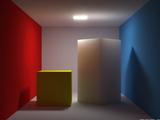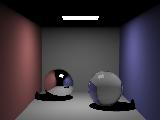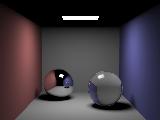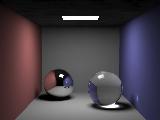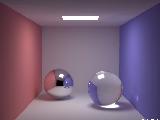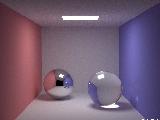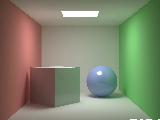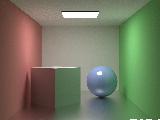
This is a replica of (one of) the cornell box model first used at the graphics lab. at Cornell. It is a typical radiosity scene with polygonal faces and diffuse materials. Here it is rendered using photon mapping. Note how photon mapping correctly renders the shadows where the boxes touches the floor. In mesh based approaches (such as radiosity) the shadows often do not match up with the corners of the box elements due to lack of precision in the mesh.

